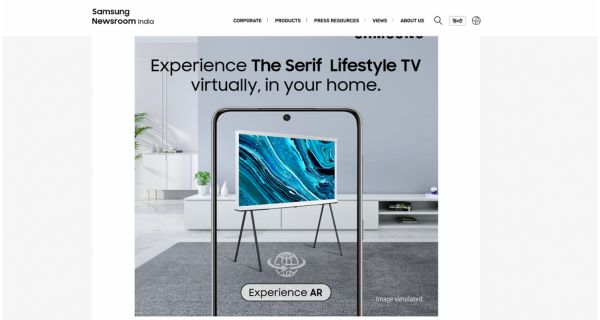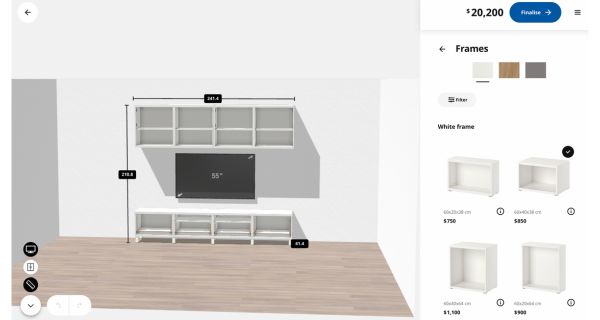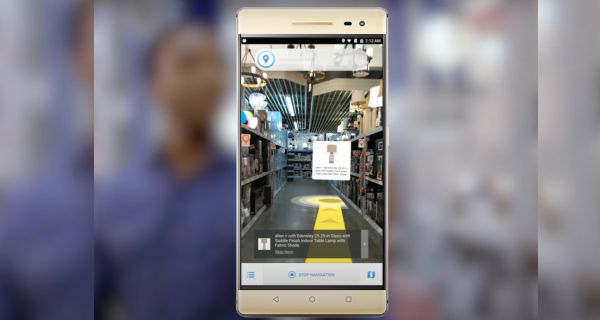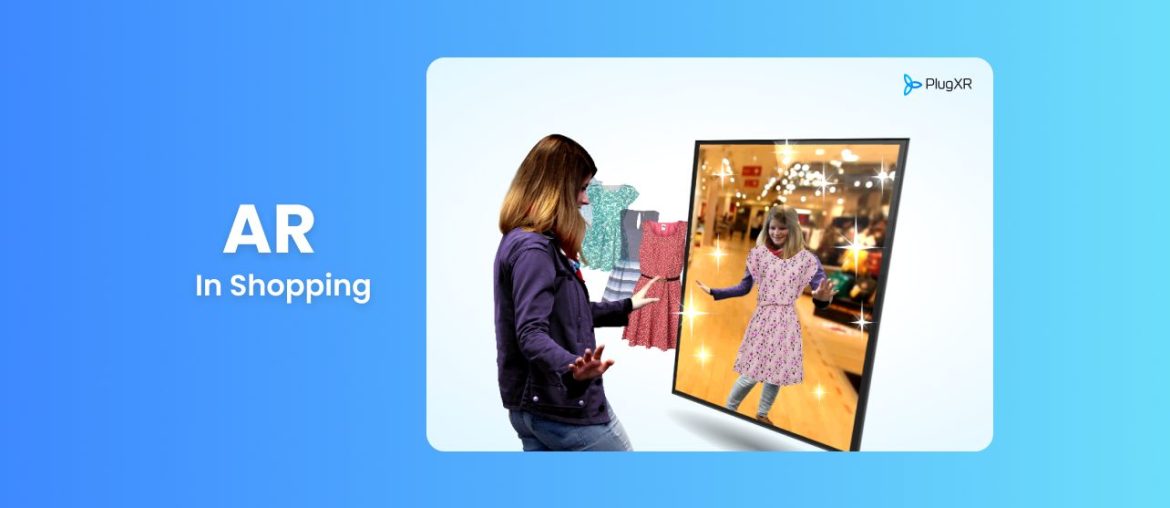You must have seen how, for years now, photo and video-sharing apps like Instagram and Snapchat allowed their users to get creative by sharing the essence of the products they sold. 360-degree views, 3D, and virtual tours allowed us to travel virtually and see objects and places. Museums were the first to sell us the experience of traversing history. Later, the real estate industry adopted it to offer virtual site tours to prospective property buyers. It was followed by recreating showrooms in virtual reality. Every other business that wanted to innovate recreated their brick-and-mortar stores in VR. The idea was to amplify how they reached out to customers online, offering a store-like experience. To further enhance shopping experiences, they turned to AR. Top-end luxury brands like Nike were the first to offer Augmented Reality shopping experiences to their customers.
AR Shopping – Current favorite and investment of the future
Augmented reality (AR) is the next big thing after AI. Most cutting-edge brands are now tapping into AR’s true disruptive potential. Every small and large enterprise is now up for AR shopping to elevate customer experience – both online and in physical stores.
Also, when combined with the other rapidly developing game-changing tech of this era, AR is poised to bring unprecedented changes to the future of shopping. Be it the development of immersive visualization or the optimization of shopping experiences, things will change rapidly.
Immersive Product Visualization
One of the most apparent opportunities for augmented reality in shopping is using AR for immersive product visualization. Rather than relying on static 2D images of a product, shoppers can view incredibly realistic 3D renderings overlaid into their actual space via smartphones or AR glasses. There is Samsung that provides an early example with an app where users can visualize the latest televisions on their walls or their interior at their actual size.

Image Credit: Samsung
Furniture and home goods represent a significant market where shoppers need help making decisions about their home products.

Image Credit: IKEA
AR apps like IKEA Place and IKEA Planners can help shoppers configure sofas, storage units, and decor by viewing photorealistic 3D models in their living rooms. Even items like makeup and accessories can be tried on virtually. The gap during shopping due to a lack of proper judgment can finally be solved using AR technology.
Personalized Recommendations
The advantage is not just limited to visualization. With AR, personalizing items according to taste will be more accessible than ever. Retailers are now leveraging AR, computer vision, and machine learning to analyze shapes, colors, materials, and brands of items that customers view or capture. This data is then used to provide the customers with choices that suit their style.
Customers can also view recommendations overlaid in their environments as if the items were present. This helps change the recommendations from genetically matched to a more subjective approach suitable for different demographics.
Optimized Shopping Journeys
Augmented reality and shopping also have the distinct potential to optimize overall shopping journeys. Retail apps are beginning to integrate AR features like indoor positioning, spatial mapping, and computer vision to assist customers in navigating large stores and commercial centers.

Image Credit: Lowe
Shoppers can use AR-based apps to view branded wayfinding prompts guiding them to precise product locations.
There are even opportunities to integrate autonomous mobile stores or product lockers dynamically summoned via AR cues for rapid order delivery and pickup. These innovations streamline in-store shopping and bypass pain points like getting lost or frustrated searching for items. The increase in efficiency will reduce the time customers spend on their shopping and reduce the losses for retailers due to manhandling and other efficiency issues.
Enhanced Product Education

Many everyday shoppers need deep knowledge of the products they purchase, especially when they buy products online. Not enough education leads to non-efficient buying decisions or products needing to be used to their full potential. Augmented reality in eCommerce, retail, and other online businesses allows brands to educate buyers through interactive experiences beyond traditional marketing materials. For example, beauty company L’Oréal uses AR online shopping instruments like virtual try-ons and tutorials, allowing customers to apply various makeup techniques using their smartphone cameras.
This knowledge is crucial while buying products in areas associated with automobiles or smart gadgets. People with a better understanding will make better choices and get better products. Specifications are hard to understand for an average customer. Still, with AR, they can comprehend the difference with the help of visual effects and direct comparison in the form of an immersive experience.
Reinvented Payment Systems
Payment systems in most physical stores haven’t changed substantially in decades. Even now, you can see long queues at supermarkets or during sales. But AR can help solve the most frustrating experience for many people.
Startup Caper is developing “smart carts” enabled with sensors, cameras, touchscreens, and integrated checkout right in the cart. It automatically detects items placed inside, letting shoppers simply walk out when done. Amazon Go uses similar computer vision technology to eliminate checkout lines, with customers charged automatically using an app as they exit. While still early, these innovations prove how AR can revolutionize aspects like purchasing frictionlessly.
Key takeaways for you!
Augmented reality shopping ideas can profoundly reshape retail, eCommerce, and online businesses. Augmented Reality online shopping experience delivers clear value to consumers and businesses. Immersive visualization, hyper-personalized recommendations, optimized journeys, enhanced education, and reinvented payments will be essentials. It is why brands have started to adopt AR for various applications in their business, primarily marketing.
Even if the investment in AR may not look significant to traditional businesses, the change in trends will force them to adapt to this change. If you wish to have an edge over your competitors, adding an AR Shopping experience to your customer journey can be the immediate move. Start recreating your product page in 3D and AR with the PlugXR Platform. Sign up now to start your AR journey!

